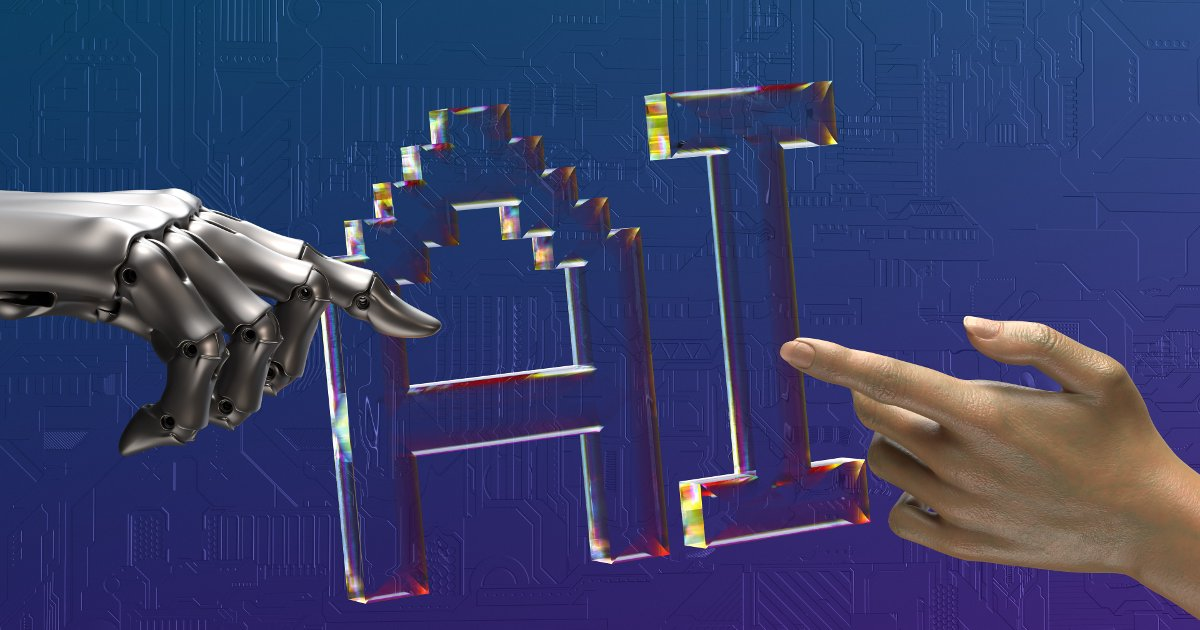Responsible AI: Addressing The Misconception Of True AI Learning

Table of Contents
The Illusion of "True" AI Learning
Current AI is Primarily Statistical Prediction
Current AI, particularly deep learning models based on neural networks, excels at pattern recognition and statistical prediction. These systems learn from massive datasets, identifying correlations and making predictions based on those patterns. However, this is fundamentally different from human-like "understanding." They don't "grasp" concepts in the same way we do; instead, they perform sophisticated statistical modelling. The limitations of this approach become apparent when considering:
- Overfitting: A model can become so specialized to its training data that it performs poorly on new, unseen data. This means the AI might be highly accurate on the data it's trained on but completely inaccurate on anything else.
- Bias in Datasets: If the data used to train an AI system contains biases (e.g., racial, gender, or socioeconomic), the resulting AI will likely perpetuate and even amplify those biases in its predictions. This leads to unfair or discriminatory outcomes.
- Lack of Generalizability: Current AI systems often struggle with generalization. They can perform a specific task exceptionally well but fail when presented with slightly different variations of that task, highlighting their limitations in flexible problem-solving.
These limitations emphasize that current machine learning and deep learning techniques, while powerful, are not equivalent to true AI learning in the human sense. Their reliance on statistical modelling, rather than genuine understanding, needs careful consideration.
The Absence of Genuine Understanding and Reasoning
Beyond statistical prediction, a major gap in current AI is the absence of genuine understanding and reasoning. While AI can process vast amounts of information, it typically lacks:
- Cognitive Abilities: True intelligence involves cognitive functions like common sense reasoning, contextual understanding, and the ability to apply knowledge flexibly to new situations. Current AI systems largely fall short in these areas.
- Reasoning: Humans use logical reasoning, deductive reasoning, and inductive reasoning to solve problems and make inferences. AI systems often struggle with tasks requiring this level of abstract thought.
- Contextual Understanding: AI often misinterprets subtle nuances in language, images, or situations due to a lack of genuine contextual understanding. This can lead to errors and inappropriate responses.
For example, an AI might misinterpret an image due to unusual lighting or background, or it might respond inappropriately to a conversational prompt because it lacks understanding of sarcasm or humor. These limitations underscore the significant difference between statistical pattern recognition and true cognitive understanding.
Ethical Considerations in AI Development
Building responsible AI systems requires careful attention to ethical considerations. Ignoring these aspects can lead to harmful consequences.
Bias and Discrimination in AI Systems
The presence of bias in training data is a major ethical concern in AI. If the data reflects existing societal biases, the resulting AI system will likely perpetuate and amplify these biases, leading to discriminatory outcomes. For example:
- Facial Recognition: Some facial recognition systems have shown higher error rates for individuals with darker skin tones, reflecting biases in the datasets used to train them.
- Loan Applications: AI-powered loan application systems might unfairly discriminate against certain demographic groups if the training data reflects historical biases in lending practices.
Mitigation strategies include:
- Data Augmentation: Enriching datasets with more representative data to reduce biases.
- Algorithmic Fairness: Developing algorithms specifically designed to mitigate bias and promote fairness.
- Ongoing Monitoring: Continuously monitoring AI systems for bias and discriminatory outcomes.
Transparency and Explainability
The "black box" nature of many AI systems is another ethical challenge. Understanding how AI systems reach their conclusions is crucial for building trust and accountability. Explainable AI (XAI) aims to address this by making AI decision-making processes more transparent and interpretable. Techniques used to enhance transparency include:
- Feature Importance Analysis: Identifying the most influential factors in an AI's decision-making.
- Rule Extraction: Extracting human-readable rules from AI models.
- Visualizations: Creating visualizations to illustrate the inner workings of AI systems.
Data Privacy and Security
Protecting the sensitive data used to train and deploy AI systems is paramount. Regulations such as GDPR (General Data Protection Regulation) and CCPA (California Consumer Privacy Act) emphasize the importance of data privacy. Best practices include:
- Data Anonymization: Removing identifying information from datasets.
- Data Encryption: Protecting data using encryption techniques.
- Access Control: Restricting access to sensitive data to authorized personnel only.
Building Responsible AI Systems
Building responsible AI systems requires a proactive and holistic approach.
Human-in-the-Loop Systems
Incorporating human oversight and intervention in AI decision-making processes is crucial for mitigating risks and enhancing accuracy. Human-in-the-loop systems allow humans to review AI-generated recommendations and make final decisions, ensuring responsible use of AI. This also allows for correction of errors and biases which may emerge.
Continuous Monitoring and Evaluation
Ongoing monitoring and evaluation are vital for identifying and addressing potential biases and ethical concerns in AI systems. This involves:
- Model Monitoring: Regularly evaluating the performance of AI systems to detect any deviations from expected behavior.
- Bias Detection: Implementing mechanisms to detect and quantify bias in AI outputs.
- AI Auditing: Conducting regular audits to assess the ethical implications of AI systems.
Conclusion
The pursuit of "true" AI learning remains a significant challenge. Current AI excels at prediction but lacks genuine understanding and reasoning. Therefore, responsible AI development is not just an ethical imperative but a crucial step towards building safe and beneficial AI systems. By addressing biases, ensuring transparency, and incorporating human oversight, we can harness the power of AI while mitigating its potential risks. Let's work together to build a future of truly responsible AI, focusing on building ethical, effective, and trustworthy AI solutions, moving beyond the misconception of current AI learning capabilities.

Featured Posts
-
 Discover Staten Islands Hidden Gems Nonna Style Italian Food
May 31, 2025
Discover Staten Islands Hidden Gems Nonna Style Italian Food
May 31, 2025 -
 Uk Veterinary Care The Impact Of Corporate Targets On Pet Owners
May 31, 2025
Uk Veterinary Care The Impact Of Corporate Targets On Pet Owners
May 31, 2025 -
 Unexpected Drop In Spanish Inflation Fuels Speculation Of Ecb Interest Rate Cut
May 31, 2025
Unexpected Drop In Spanish Inflation Fuels Speculation Of Ecb Interest Rate Cut
May 31, 2025 -
 75 Year Old Duncan Bannatyne And 45 Year Old Wife Support Operation Smile In Morocco
May 31, 2025
75 Year Old Duncan Bannatyne And 45 Year Old Wife Support Operation Smile In Morocco
May 31, 2025 -
 Ita Airways And Giro D Italia 2025 A Winning Partnership
May 31, 2025
Ita Airways And Giro D Italia 2025 A Winning Partnership
May 31, 2025
